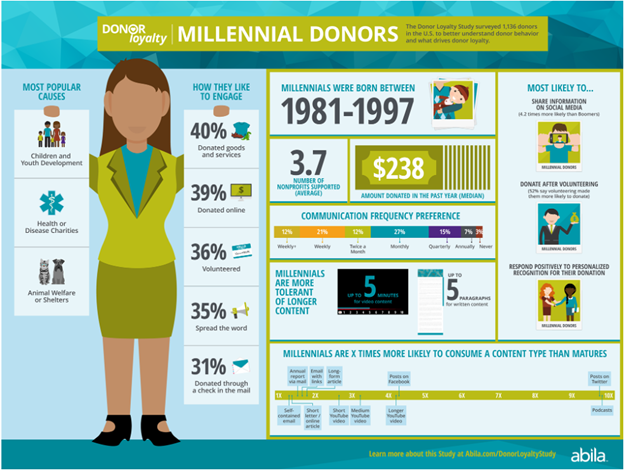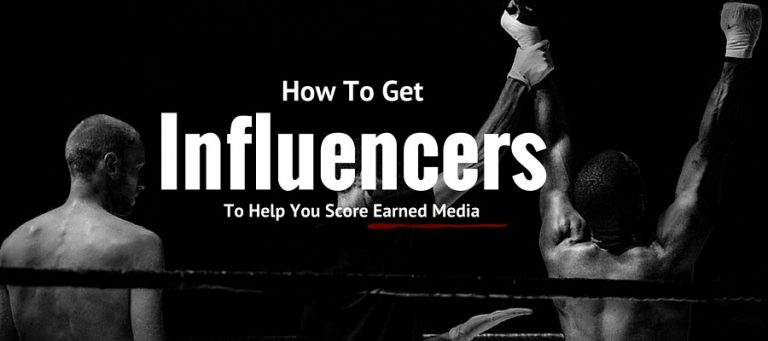Guide to Year-End Fundraising Powered By Millennial Donors

For many nonprofits, the year-end giving season is the most wonderful time of the year. Year-end fundraising accounts for nearly 40% of total revenue for nonprofits worldwide. But with in-person events like auctions, galas, and luncheons canceled to curb the spread of COVID-19, many organizations have been forced to find alternative ways to raise funds to meet year-end fundraising goals.
Luckily, donors are still eager to give despite economic uncertainty and social unrest. Most of that giving has shifted online, however, as virtual fundraising events have become the norm. While pivoting your fundraising strategy to online campaigns may seem challenging, it also presents a fresh opportunity to reach new audiences, like potential Millennial donors.
Profiling Millennial Donors
At 80 million strong, Millennials now comprise 50% of the workforce. They are incredibly passionate about giving and are statistically more cause-driven than previous generations. However, the voice of this consumer differs significantly from that of Baby Boomers and Gen X, who make up a large percentage of the donor base of legacy nonprofits.
Millennials are not exactly digital natives, but they are technology forward. They value speed, efficiency, and ease of use. When giving, they’re less likely to write a big check at the end of the year. They instead prefer ways to participate in hands-on activities like content creation, volunteering, and peer to peer recruiting. Compared to Boomers, Millennials are more likely to share information at the nonprofit on social media and 35% more likely to spread the word about a nonprofit, in general.
To meet Millennials where they are, nonprofits must provide them with more creative ways to make donations that tick all the boxes, including financial.
Leverage Storytelling to Connect with Millennial Donors
Ninety percent of Millennials are motivated to give to causes that appeal to their values. So articulating your mission and impact through impactful stories must be the linchpin of your year-end fundraising strategy if you want to engage more Millennial donors.
Think about how your organization is addressing specific needs in the community. Create compelling visuals and content that illustrate your organization’s impact on the core populations you serve.
Keep this in mind. Every good story has conflict and resolution. Be sure to emphasize why your cause is important (conflict) and how donors can help bring your mission to life (resolution).
Use Social Media to Increase Visibility and Engagement
Driven by a strong desire to connect, Millennials socialize online much more often than older generations. On average, they spend six hours a week on social media. Rather than allocating all of your budget to traditional print collateral, invest in the social channels Millennials already use to save costs and reach them more effectively.
Keep your social media profiles up to date and post frequently. Millennials have a strong desire to make a difference, so sharing content demonstrating how your organization moves the needle towards positive change is essential to gaining buy-in.
Also, consider partnering with micro-influencers in the nonprofit sector to increase visibility. Given that the pandemic has increased screen time across all generations, this tactic has the added benefit of increasing reach across all donor segments.
Create a Mobile-Friendly Website and Seamless Payment Experience
As we touched on earlier, Millennials are tech-savvy and efficient. When engaging online, they value websites that are visibly pleasing and user friendly.
Millennials also rely on mobile devices to keep them connected. Over 48% of Millennials spend a large majority of their day on their phones. So, your website must be optimized for mobile and scalable to keep them engaged. Providing a seamless, omnichannel experience reduces the risk of them leaving your site before donating.
Looking to your website’s technical aspects, maintain page load times under three seconds, and offer multiple online payment systems to minimize bounce rates and cater to Millennials’ diverse tastes in e-commerce applications. (Think Paypal, Venmo, Network For Good, etc.).
Foster Trust Through Relationship Building
Finally, foster trust with Millennials through authentic relationship building. Much less trusting of traditional media than their predecessors, Millennials place a high value on peer-to-peer evaluations and opinions. Thus, being authentic and transparent in your communication is a big component of earning Millennial trust and donor dollars.
Tap into Millennials’ natural tendency to team up and encourage peer to peer fundraising efforts. Let them become evangelists for your cause by inviting them to be a part of the solution. Keep them engaged and publicly acknowledge their commitment as they are more apt to donate after volunteering with your organization.
Key Takeaways
Engaging Millennials can energize year-end fundraising efforts and help fill the donor pipeline. As older donors age out, the ability to cultivate the next generation of donors is essential to your organization’s future revenue. But the tactics used to secure older donors won’t work for Millennials or younger donors. To fully engage them, leverage storytelling, social media, and relationship building to activate this generation’s strong desire to make a difference.





